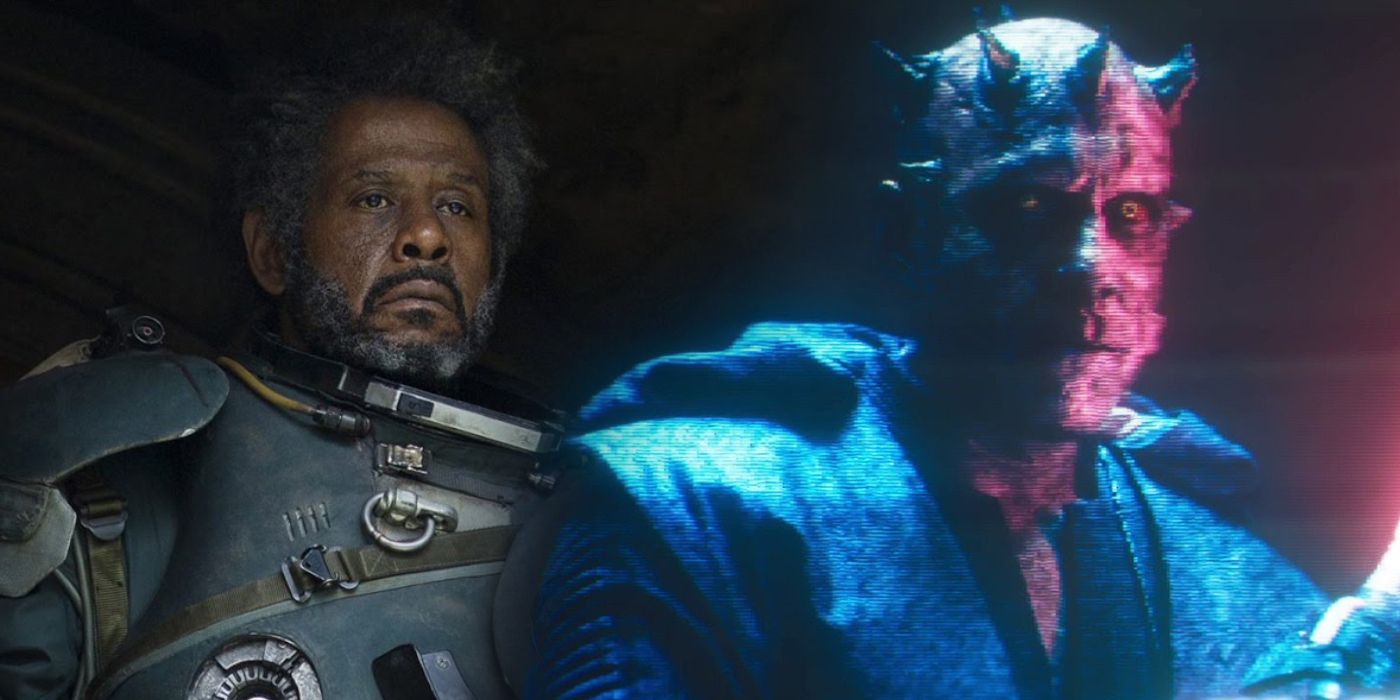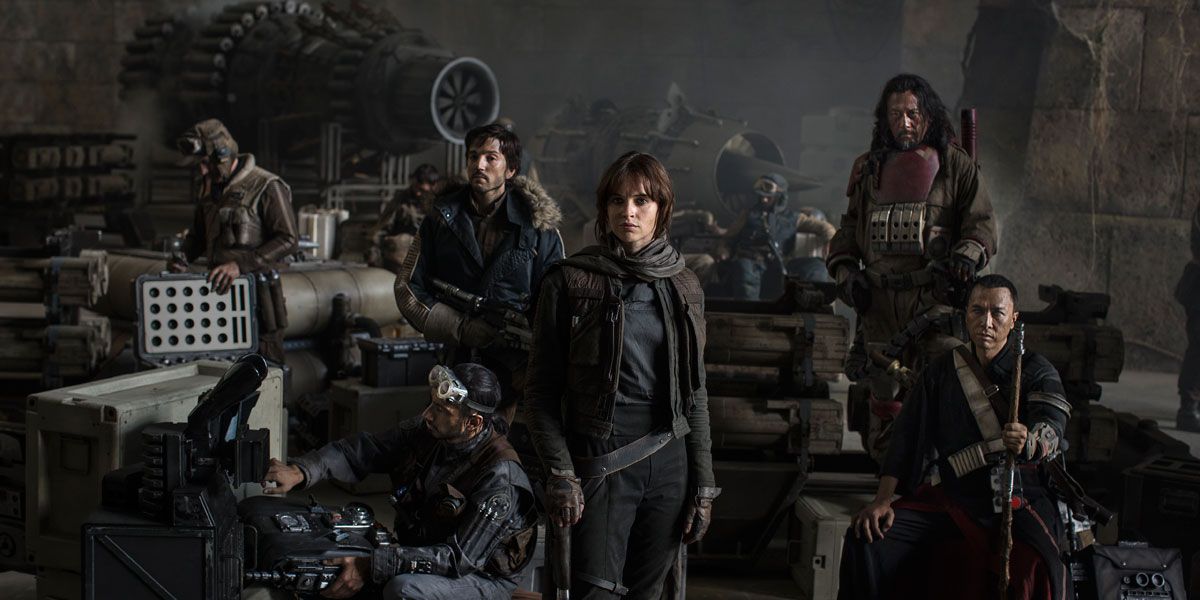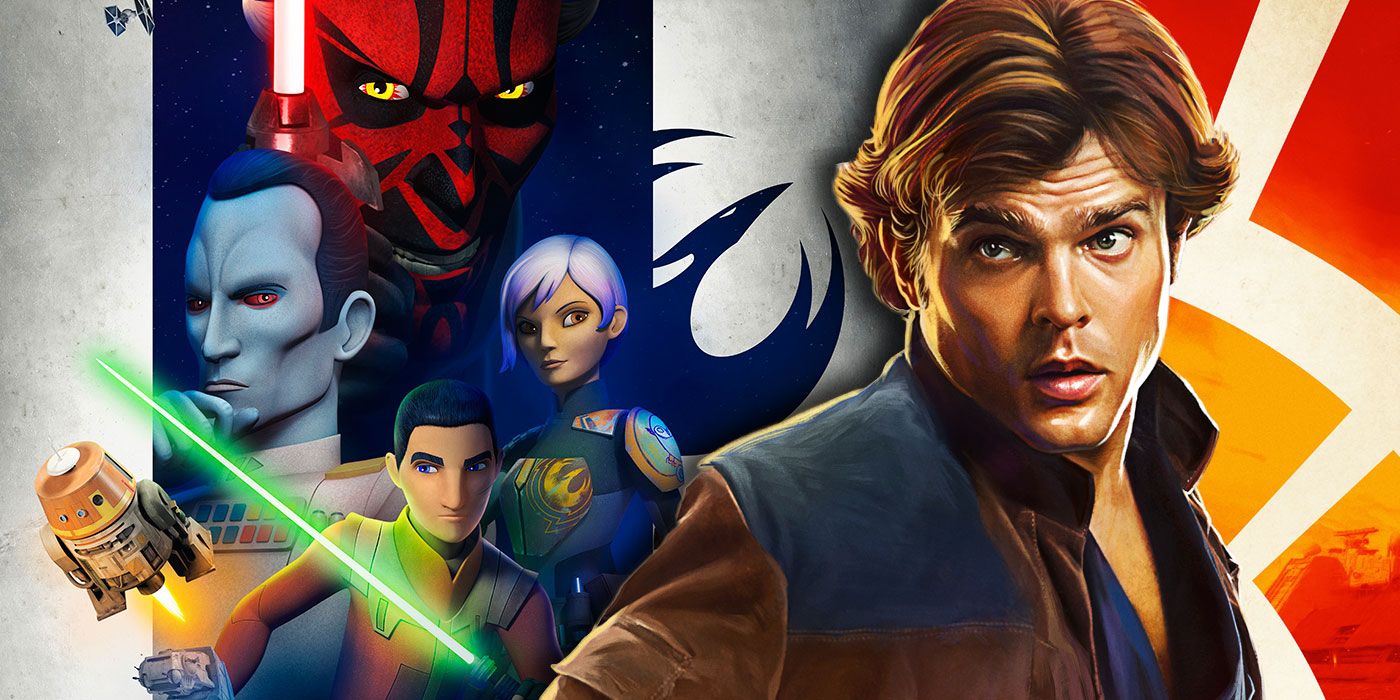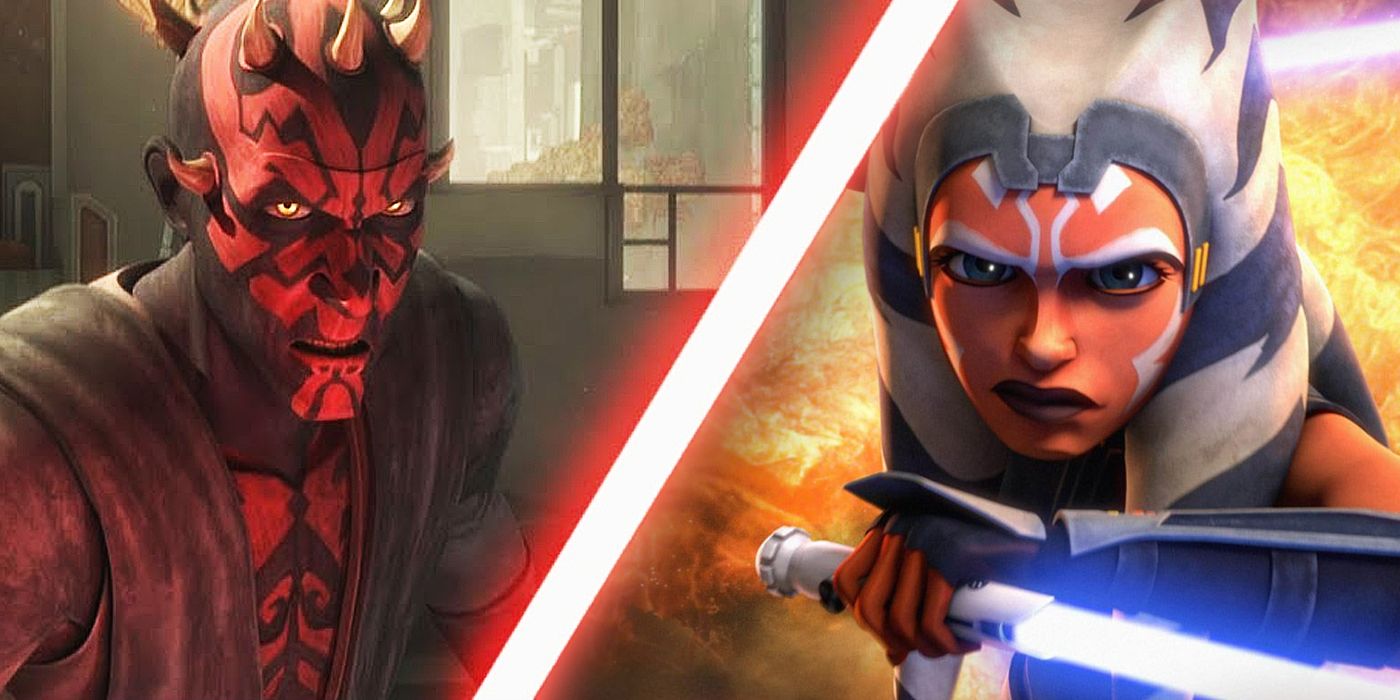The Star Wars saga's two anthology films -- 2016's Rogue One: A Star Wars Story and 2018's Solo: A Star Wars Story -- have a strange place in the franchise's legacy. Despite being great fun, Solo struggled to live up to expectations at the box office. And while Rogue One was a runaway success -- being an excellent prequel to A New Hope that brought in over $1 billion -- it doesn't tend to get brought up in conversation nearly as much as the mainline Star Wars films. If that sounds familiar, chances are you're a fan of the Star Wars television shows.
It's clear the Star Wars anthology films were made with animated series like Star Wars: The Clone Wars and Star Wars Rebels in mind. And quite frankly, this was a great call on the part of Lucasfilm, as Rogue One and Solo finally gave some big screen credibility to the canon established on the small screen. Even if they don't tend to be put on the same pedestal as the main Skywalker Saga entries, that is something no one can ever take away from those who stuck by Clone Wars and Rebels over the years, hoping that one day they'd get some meaningful cinematic acknowledgement. With Disney and Lucasfilm insisting the cartoons were part of the official series canon, it was incredibly cathartic and vindicating to see them put their money where their mouth is.
First and foremost, Rogue One marked the very first time a character originating from TV was brought into a live-action Star Wars film, that being Saw Gerrera. The character of Saw first debuted in 2012 during Clone Wars Season 5, later getting a mention in the early goings of Rebels. Come Rogue One's release in late 2016, Saw was brought to life by Forest Whitaker. By this point in the timeline, the Clone Wars veteran had become the leader of the Partisans, an extremist rebel cell separate from the Rebel Alliance.
While Saw meets his demise during the events of Rogue One, he made his first full Rebels appearance not long after -- further tying the character to Star Wars TV. Rebels -- which takes place a few years before Rogue One -- was on a mid-season break when the first anthology film hit theaters in December of 2016. When the series returned for the back half of Season 3 that January, Whitaker reprised his role as Saw for the mid-season premiere, later popping up again in Season 4.
Of course, Saw wasn't the only animated character involved in Rogue One. While none of Rebels' original characters make prominent physical appearances in the film, there is a brief moment in which one of the show's main players -- Hera Syndulla -- is paged over the intercom at the Rebel Alliance base on Yavin IV. What's more, Hera's iconic ship -- the Ghost -- later appears during the Rebel assault on Scarif.
Possibly the biggest shoutout Rogue One gave to its small screen counterparts is the fact that it was the first and only Star Wars movie to date in which a kyber crystal is both shown and referred to by name, with Felicity Jones' Jyn Erso wearing one as a necklace. Kyber crystals were part of Star Wars lore well before Clone Wars premiered in 2008. However, it was that show that officially established the lightsaber-powering crystals as canon.
Prior to Clone Wars, kyber crystals were mainly relegated to various pieces of Star Wars tie-in media (much of which was no longer canon by 2012 anyway). They were not named, nor shown, in any of the original six Star Wars films. The same can largely be said for Disney's sequel trilogy, save for a brief glimpse of a crystal toward the end of The Last Jedi. Still, Rogue One has the distinction in being the only time the words "kyber crystal" have been uttered on the big screen.
Solo didn't have as many shoutouts to the TV shows, but it did have the biggest one of all. Before we get to that though, there is an easter egg that bears mentioning. Like kyber crystals, holocrons were introduced to Star Wars lore some time ago, but owe their canonicity to projects like Clone Wars and Rebels. They went unshown and unnamed in the films up until Solo, when eagle-eyed fans were able to distinctly spot a Sith holocron residing in the office of Paul Bettany's Dryden Vos.
Speaking of Dryden, late in Solo, it is revealed that the villain is actually something of a figurehead, and that the true leader of the Crimson Dawn crime syndicate is none other than Darth Maul. However, Clone Wars had already revealed the former Sith had actually survived his confrontation with Obi-Wan during the climax of The Phantom Menace. Powered by anger and mechanical legs, Maul became a powerful crime boss (and a persistent thorn in Obi-Wan's side). The Jedi master -- now going by Ben Kenobi -- only finished Maul off for good in the third season of Rebels.
If you're a fan of Star Wars' animated series, you've no doubt had a conversation explaining how Darth Maul actually lived past the Prequel Trilogy. But with the theatrical release of Solo, that fact was finally presented on the big screen of all to see. What's more, that cameo really utilized the best of both worlds, with The Phantom Menace's Ray Park reprising his role as the physical version of Maul, and Clone Wars/Rebels alum Sam Witwer returning to provide the character's voice.
Any time a film franchise expands to television, the TV side tends to get the short end of the stick as far as mainstream exposure goes. Also, to be fair, there wasn't a whole lot of opportunity for the Star Wars films to acknowledge the canon established on TV. Seeing as how the shows came out after the first six movies and the Sequel Trilogy takes place decades later, the disconnect does make sense. Plus, credit where it's due, there was a nice moment at the end of The Rise of Skywalker featuring the voices of such animated series alums as Ashley Eckstein (Ahsoka Tano) and Freddie Prinze Jr. (Kanan Jarrus).
Still, with the anthology films returning to the period in time between Episodes III and IV, they had the chance to legitimize the animated shows (and their fans) in a far more definitive manner -- and they definitely took it. Not only that, but seeing Darth Maul on the big screen again or wondering what kyber crystals were all about probably helped encourage those who didn't really see the value in the cartoons beforehand to finally sit down and give them a chance. And in that scenario, everyone wins.
While the anthology movies appear to be on hold for now, one can only hope Star Wars continues to integrate the two sides of its on-screen product. In fact, the franchise's first live-action TV series, The Mandalorian, has struck a nice middle ground between the animated realm and the movies. The show already brought the Darksaber to live-action, and is reportedly set feature Clone Wars and Rebels' Ahsoka Tano in its second season. So, the future certainly looks bright in this respect. The powers that be finally seem more or less ready to acknowledge the fact that the Star Wars cartoons aren't just canon -- they're essential.




